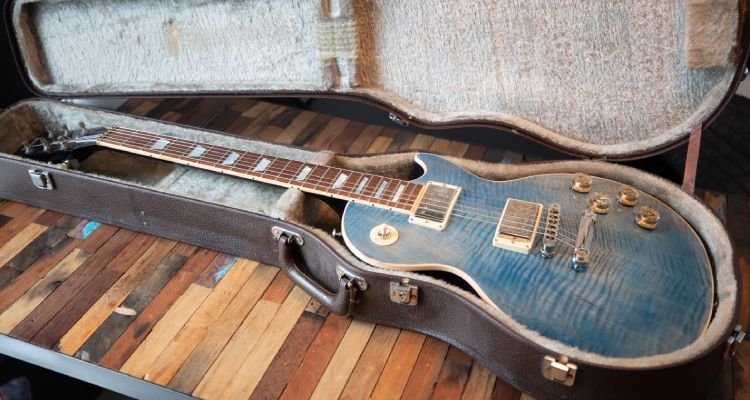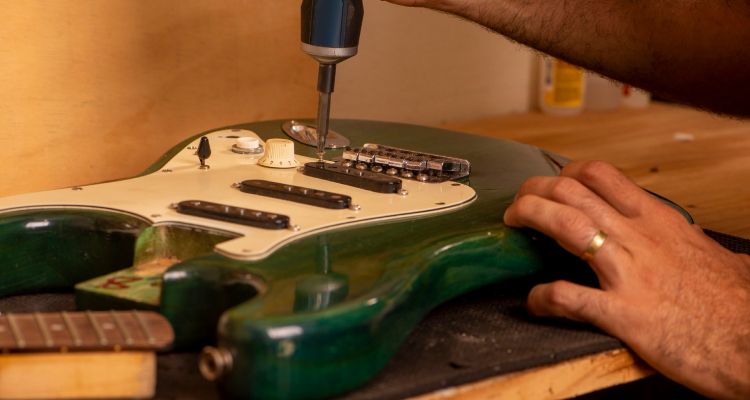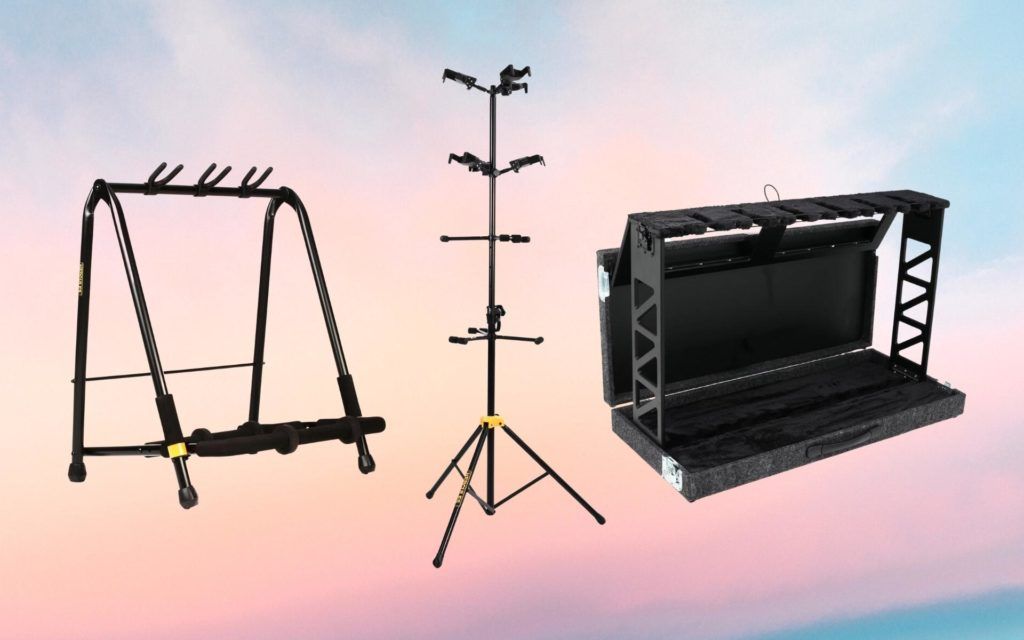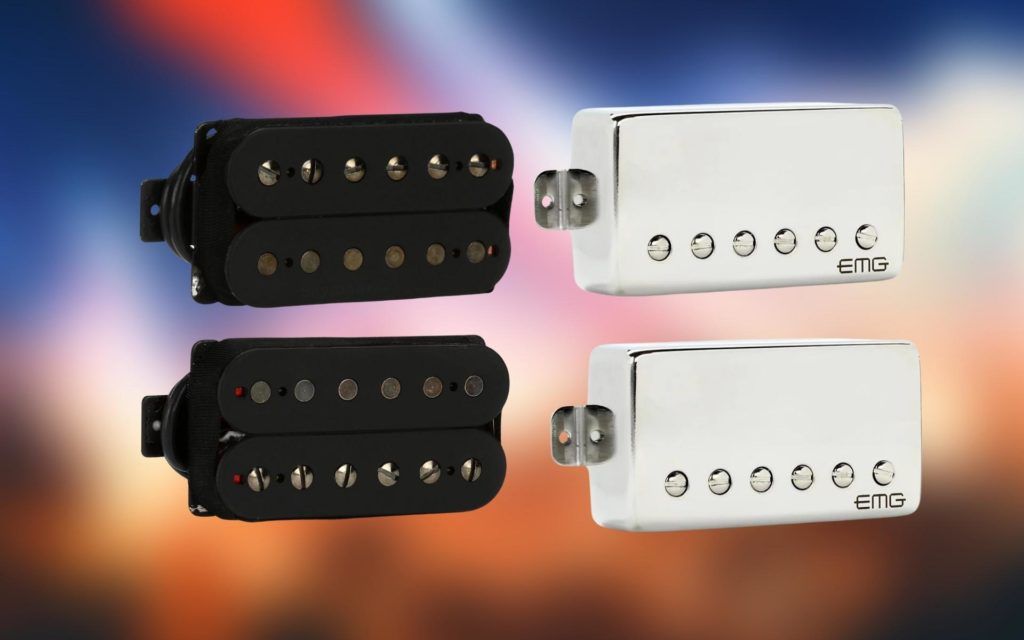Electric guitars are made up of several vital components. The body, neck, and fingerboard are made from specific materials which determine the feel and tone, and then there’s the choice of strings and, of course, the pickups.
Most musicians have heard of different pickup types – single-coils and humbuckers are the two most common. However, the term “microphonic pickups” is less commonly used.
In this guide, you’ll find out what microphonic pickups are, what they can do to an instrument’s sound, and more.
What Are Microphonic Pickups?
Pickups that are described as microphonic act in a similar way to a microphone. Rather than only focusing on the sounds made when the guitar string is struck, they also pick up other sounds from external sources, which can then be heard through the amp.
Everything You Need to Know About Microphonic Pickups
You’re unlikely to come across the term microphonic when searching for a new set of pickups for your electric guitar or bass. Most musicians are unaware that microphonic pickups exist until they experience them.
Manufacturers don’t intentionally create microphonic pickups, but how certain pickups are designed makes them more susceptible to becoming microphonic.
Whether microphonic pickups are a bad thing ultimately comes down to personal preference. Still, the results are not desirable to a musician most of the time as they make it harder to control the tone and dynamics.
What Causes a Pickup to Go Microphonic?
Certain pickups are more susceptible to becoming microphonic than others. This is a result of how the pickups are designed and assembled and the materials that the manufacturers use to construct them.
The most common cause of microphonic pickups is when the windings move around. This is more likely to occur in vintage pickups, so if you own some retro guitars, there’s a higher chance that you’ll encounter microphonics.
Specifically, the pickup coil, which consists of a thin copper wire wrapped around the bobbin thousands of times, can become loose. When this happens, sounds other than the vibrations made directly from the strings can be picked up.
In theory, every pickup is microphonic, at least to some extent. However, manufacturers use tried and tested methods to limit the microphonic qualities of pickups so that they perform more reliably.
An old set of P-90s installed on a vintage Gibson guitar are much more likely to squeal and produce all kinds of unintended sounds than a new set of modern humbuckers.
The degradation of the pickup’s inner components over time, coupled with the movement of the windings, will often result in other sounds being transmitted into the signal chain and out of the amplifier’s speaker.
Can Microphonic Pickups Be Prevented?
The degree to which a set of pickups are microphonic is directly linked to how heavily they are potted by the manufacturer.
This may sound complex, but the process of potting simply involves covering the coils in a material (usually wax) which helps to reduce the microphonic properties of the pickups.
Wax potting is an effective and very common practice that pickup designers use to minimize feedback and, in the process, improve the focus and clarity of their pickups.
It does this by preventing the coils from moving around freely, holding them more firmly in place. As we previously covered, a pickup becoming more microphonic is almost always a result of the coil moving around too much in the magnetic field.
When the coils are covered in wax, this prevents them from moving, which in turn, reduces the risk of unwanted sounds being picked up and amplified.
There are, however, some potential downsides to wax potting.
The more wax that is added to the pickup, the more muffled the tone becomes. For styles that require a bright and expressive clean tone, this added muddiness probably isn’t ideal.
It’s, therefore, essential to choose pickups that have suitable wax potting for your tonal requirements.
How Do You Test if Pickups Are Microphonic?
If you’re unaware of the impact that microphonic pickups have on the sound of a guitar, you may struggle to identify them. There are different levels of microphonic pickups, so sometimes, it can be difficult to know when you need to address this issue.
How Do Microphonic Pickups Impact Your Tone?
Tone is an incredibly important thing to most guitarists. It’s the aspect of guitar playing that we have control over, and by choosing our equipment, we can sculpt our tone in any way that we desire.
That’s why it can be frustrating when something unexpected changes our tone. Microphonic pickups have the potential to make it difficult to create the sound that we would like to achieve due to their unpredictable nature.
In most cases, the tonal effects of microphonic pickups are as follows:
- Adding external/unwanted sounds to the signal
- More noise accompanies the sound of the strings
- More prone to distortion
- Increased high-end frequencies
- More compressed sound
The great thing about playing guitar is that every aspect, from how you choose to invert chord shapes to how you shape your tone, is subjective. There’s no right or wrong – only certain ways to achieve certain sounds.
Microphonic pickups increase the unpredictability of your guitar tone because you never quite know which sounds are going to come out of your amplifier, along with the sound of you playing your axe.
A common problem that guitarists run into when using pickups that are significantly microphonic is that they can squeal a lot and produce harsh, high-end sounds that are difficult to control.
Are Microphonic Pickups Good Or Bad?
All pickups have some microphonic properties, even if they’re heavily wax potted. A set of highly microphonic pickups are something that most guitarists would probably rather avoid, but are they always bad?
Let’s say your goal is to create a unique atmospheric tone with the aid of delay, reverb, or modulation pedals. You’re probably not going to mind there being some unpredictable sounds being picked up.
In this case, the microphonic properties of the pickups may even be beneficial to you, as you will always come up with a slightly different sound depending on the way the pickups perform in a certain setting.
Another scenario where microphonic pickups probably won’t be an issue is if you’re using a lot of distortion.
The more saturated your signal is, the less noticeable the sounds caused by microphonic pickups will be. Again, you may even find that these sounds add to the overall color of your tone.
On the other hand, microphonic pickups are not ideal if your aim is to create a polished clean tone. For this purpose, you’ll want to minimize all unwanted noise.
When recording with microphonic pickups, you can expect the mixing process to be more challenging. It’s difficult to prepare for the sounds that will be present in your guitar’s output.
While it may be possible to use EQ or noise gates to reduce some of the sounds, due to its unpredictable and fluid nature, the microphonic pickup will certainly make things more difficult when recording.
Can You Fix Microphonic Pickups?
If your pickups are microphonic and you don’t like the way they sound, the only way to reduce this is through wax potting. Unless you’re experienced with pickup modifications and designs, I wouldn’t recommend attempting to do this yourself.
A professional guitar repairer or technician may be able to add wax potting to your pickups to minimize their microphonic properties. Whether or not this is possible depends on the condition of the pickups and the severity of the microphonic issue.
There are some measures you can take to minimize the impact that microphonic pickups have on your tone.
Firstly, if you’re using a lot of gain from your amplifier, you may find that this makes the unwanted microphonic sounds more noticeable. Try adjusting the gain setting to see whether you can reduce the prominence of these sounds.
If the pickup is producing a particular frequency that you want to get rid of, using an EQ pedal might be an effective method. Preferably choose one that has at least four bands so that you can find the frequency and reduce its volume.
Likewise, noise gate pedals can also sometimes be effective at blocking out any unpredictable sounds that are caused by microphonic pickups.
The issue with these pedals is that they can also sometimes block out some of the desirable frequencies too, which can weaken your tone.
If you can afford it and you’re not too attached to your current pickups, it might be worth simply investing in a new set of pickups that are less microphonic.
Summary
Microphonic pickups are something that many guitarists experience, particularly when using vintage instruments. Hopefully, you’ve now got an understanding of what causes them, their impact on a guitar’s tone, and how you can minimize the issue.










